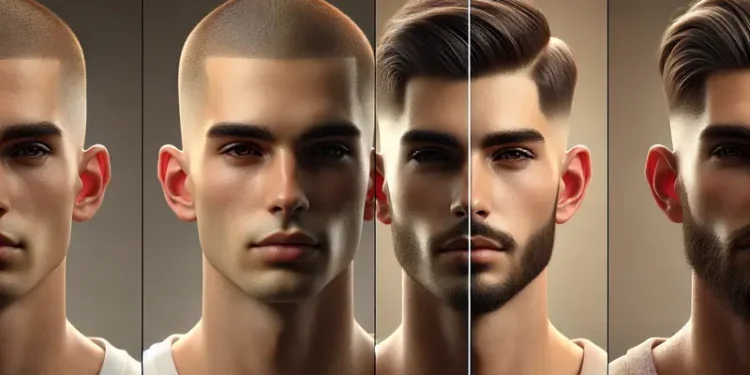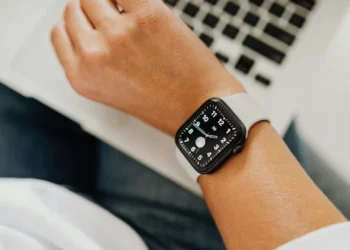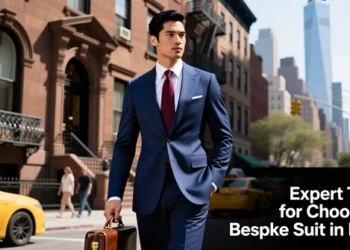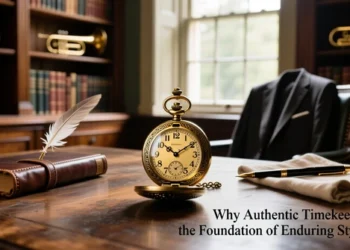When it comes to men’s grooming, the right haircut can make all the difference. Two of the most popular styles in the barbering world are the bald fade and the taper fade haircut. While they might look similar at first glance, they have distinct characteristics that can dramatically impact your overall look. If you’re debating between a bald fade vs. taper fade haircut, understanding the key differences can help you make the best choice.
What is a Bald Fade?
A bald fade, also known as a skin fade, is a type of haircut where the hair gradually fades down to the skin. The fade begins at a higher point on the head and blends seamlessly into the scalp, creating a sharp and clean appearance. The bald fade is widely used in modern styles because it offers a sleek and polished look.
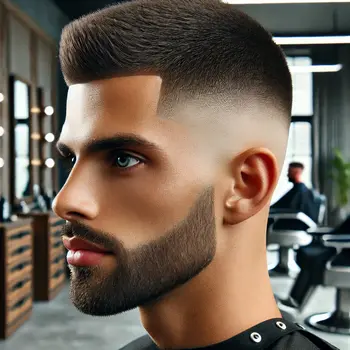
This type of fade can be customized based on how high the transition starts. Common variations include:
- Low Bald Fade: The fade starts just above the ears, offering a subtle yet stylish look.
- Mid Bald Fade: Begins slightly higher around the temples, giving a balanced contrast.
- High Bald Fade: The fade starts near the crown, resulting in a bold, dramatic effect.
The bald fade is a favorite among men who want a crisp, low-maintenance style that works well with short haircuts like buzz cuts, crew cuts, and even pompadours.
What is a Taper Fade?
A taper fade is a more gradual transition where the hair fades down without completely blending into the skin. Unlike a bald fade, the taper fade maintains some length at the shortest point, usually leaving a bit of hair instead of going all the way to the scalp. The result is a more natural and classic appearance, often seen in professional and formal settings.
There are different types of taper fades, including:
- Classic Taper: A conservative fade that keeps the sides clean without exposing too much skin.
- Low Taper Fade: A subtle fade near the neckline, perfect for those who prefer a neat but understated look.
- High Taper Fade: A more noticeable taper that still retains some hair at the shortest length.
Taper fades are often paired with longer hairstyles like comb-overs, side parts, and textured quiffs, making them a versatile option.
Key Differences Between Bald Fade and Taper Fade
While both haircuts involve fading, they differ in execution and overall effect:
- Fade Length: A bald fade completely shaves the hair down to the skin, while a taper fade maintains some length at the shortest point.
- Sharpness: Bald fades create a more striking contrast, whereas taper fades provide a softer, more blended look.
- Maintenance: Bald fades require more frequent touch-ups (every 1–2 weeks) to maintain a clean appearance, while taper fades are easier to grow out and maintain.
- Versatility: Taper fades are more adaptable for different occasions, while bald fades lean towards a modern, edgy aesthetic.
Which One is Right for You?
Choosing between a bald fade vs. taper fade haircut depends on personal preference, lifestyle, and face shape.
- If you want a bold, modern, and sharp look, go for a bald fade.
- If you prefer a subtle, classic, and low-maintenance style, a taper fade is the better choice.
- For those with round or square face shapes, a bald fade can add height and structure.
- If you have a longer face, a taper fade balances out the proportions without making the head appear too elongated.
The Barber’s Perspective
Many barbers recommend the taper fade for first-timers because it’s easier to maintain. According to celebrity barber and men’s grooming expert Mark Marrero, “A taper fade is always a safe bet—it’s stylish, versatile, and doesn’t require constant upkeep like a bald fade.” On the other hand, he adds, “A bald fade is for those who want that clean, fresh-out-the-barbershop look every day.”
Also Read: bald taper fade
Final Thoughts
Whether you choose a bald fade or a taper fade, both styles offer unique benefits. The key is to find what works best for your personal style, face shape, and maintenance preference. With the right barber and styling routine, either option can elevate your look and enhance your confidence.
